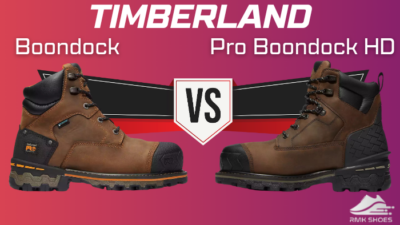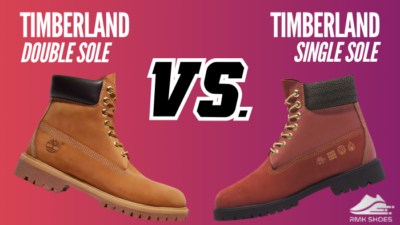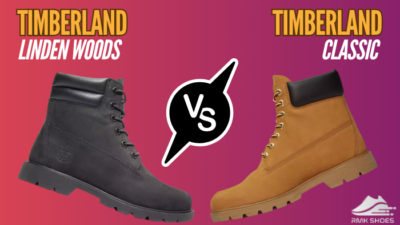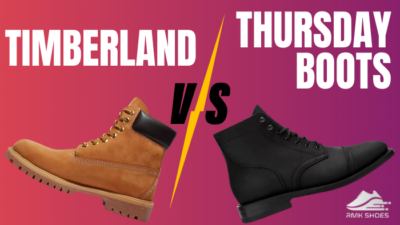The race for carbon-plated glory heats up again, with Hoka’s Carbon X3 and Nike’s Air Zoom Alphafly 2 locked in a head-to-head battle.
Both brands have been innovating and pushing the boundaries of what’s possible with carbon technology, which aims to enhance speed and efficiency on the run.
But which shoe is better for you?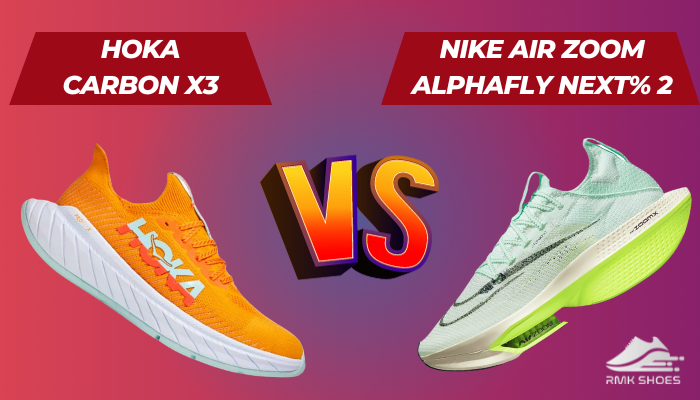
Today, I’ll show you the similarities and differences between these two super shoes and help you find the best fit for your running goals.
So, let’s begin.
Overview of Hoka Carbon X3 and Nike Air Zoom Alphafly NEXT% 2
The Hoka Carbon X3 and Nike Air Zoom Alphafly Next 2 are the best carbon-plated running super shoes.
They stand at the forefront of advanced running shoe technology tailored to distinct runner preferences and purposes.
However, they have different characteristics that may suit your running preferences.
Hoka Carbon X3
The Carbon X3, unveiled in 2022, introduces the revolutionary PROFLY X+ supercritical foam.
Hoka CX 3 proves its versatility as an ideal companion for long distances and daily training. Featuring a PROFLY X+ midsole foam and a carbon plate, it delivers firm and responsive cushioning, complemented by a rockered profile for a smooth and stable ride.
With a weight of 8.5 oz, a 5 mm drop, an Engineered mesh upper, and a 32 mm heel stack height, the Carbon X3 balances traction, durability, and comfort seamlessly.
Nike Air Zoom Alphafly NEXT% 2
A notable development was an Air Zoom pod added under the forefoot to enhance cushioning and responsiveness. Also, the anticipated Alphafly 3, set to be released in 2024, is expected to build on these advancements.
Nike Air Zoom Alphafly 2 emerges as a performance powerhouse designed for racing and speed.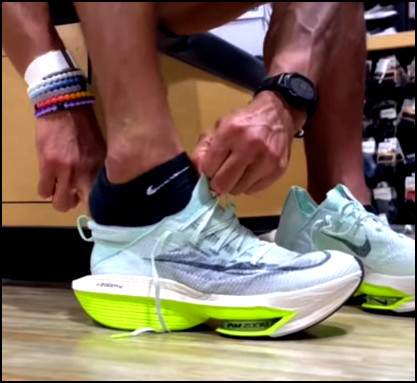 Its ZoomX foam midsole and carbon plate create soft and bouncy cushioning, augmented by Air Zoom Pods under the forefoot for added responsiveness.
Its ZoomX foam midsole and carbon plate create soft and bouncy cushioning, augmented by Air Zoom Pods under the forefoot for added responsiveness.
In addition, the Alphafly Next 2 is designed with a lightweight and propulsive build, weighing in at 7.4 ounces, an 8 mm drop, and a 40 mm heel stack height. Its Atomknit mesh upper provides superior breathability and a secure fit.
That said, while the Carbon X 3 excels in versatility, stability, and durability, the Alphafly 2 leans towards being lighter, softer, and more responsive.
So, which of these running shoes is better?
Before deciding, let’s take a closer look at the following section. First, let’s examine their specifications, then we will go into detail on how they compare.
Feature Comparison of Hoka Carbon X3 and Nike Air Zoom Alphafly NEXT 2
The Hoka Carbon X3 and Nike Air Zoom Alphafly 2are carbon-plated sneakers that many runners admire. Also, Alphafly Next 2 sets the standard for running shoes with its superior innovations.
That said, Hoka CX 3 has its benefits too. Check the comparison below to understand what you can expect from these shoes.
| Features | Hoka Carbon X3 | Nike Air Zoom Alphafly NEXT% 2 |
|---|---|---|
| Cushioning | Cushioning is a bit firmer | Softer, more cushioned |
| Stability | Superior stability | Superior stability |
| Upper | Engineered mesh | Atomknit |
| Midsole | Meta-Rocker, PROFLY X foam | ZoomX foam with Zoom Air pods |
| Outsole | Rubberized foam | Rubber |
| Weight | Slightly heavier (8.5 oz men's, 7.55 oz women's) | Lighter (8 oz men's, 7.4 oz women's) |
| Stack Height | 32 mm heel, 27 mm forefoot | 40 mm heel, 32 mm forefoot |
| Drop | 5 mm | 8 mm |
| Fit | Wide, accommodating toe box, standard midfoot | Narrower, snug fit throughout |
| Toe Box | Wider, spacious | Narrow, snugly fit |
| Strengths | Ultra-plush comfort, stability, smooth transitions | Explosive energy return, lightweight feel, aggressive racing design |
| Weaknesses | Bulkier feel and is not as responsive as Alphafly 2 | Less stable, demanding running form, higher price |
| Best For | Marathoners seeking cushioned support and comfort, high mileage runners | Speed-focused runners chasing PBs, shorter/long distances, experienced runners |
The shoes are comparable in terms of their specifications. However, specifications cannot tell the whole story.
Let us discuss the differences and similarities between the shoes to understand which one is better for you in real life.
Primary Differences Between Hoka Carbon X3 and Nike Air Zoom Alphafly NEXT% 2
The Hoka Carbon X 3 and the Nike Air Zoom Alphafly 2 are two of the many popular carbon-fiber plate shoes on the market, which are meant to boost speed and efficiency while running.
However, they serve distinct functions and have varied properties that may suit different runners and ambitions.
1. Upper Materials and Design
Regarding Upper Materials and Design, the Hoka Carbon X3 boasts a lightweight and streamlined construction, aiming to deliver a race-like experience.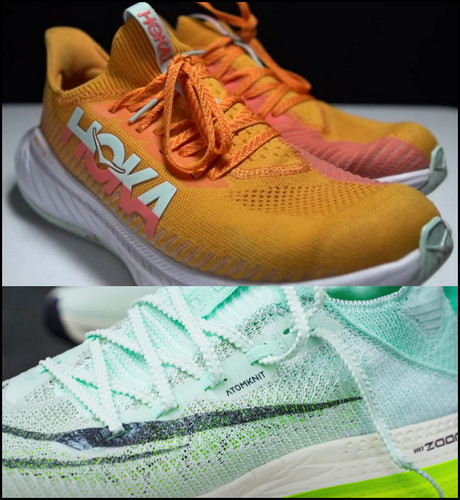
Crafted from a single-layered engineered mesh, the upper promotes flexibility and breathability.
Though thin and lightly padded, its tongue contributes to the sleek profile.
Also, the simple and zigzag designed eyelets maintain the shoe’s uncomplicated design.
The heel’s swallowtail shape extends the shoe’s geometry, ensuring a smooth ride, complemented by the convenience of a pull tab for easy wear.
I especially love the sleek, understated design – it’s all about performance without screaming for attention. During long runs, the upper disappears, leaving my feet relaxed and comfortable, focused on churning out the miles.
However, it’s worth noting that some runners may find the upper slightly loose, raising concerns about precision, particularly around the midfoot and heel.
On the other hand, the Nike Air Zoom Alphafly Next% 2 takes a different approach with a sleek and snug upper designed for heightened speed and performance.
The upper is made from soft and stretchy Atomknit material.
Also, the upper integrates the tongue seamlessly, featuring a notch for a custom fit.
It holds my fit securely, and the mesh top is super breathable.
Reinforced by Flywire cables, the eyelets ensure a secure lockdown. Additionally, including a pull tab facilitates effortless slipping on the shoe.
However, runners with wider feet might find the upper too tight and narrow for their liking.
It might not be for everyone, but I dig the aggressive racing aesthetic – it feels like wearing a weapon of speed. My foot stays locked in and responsive, propelling me towards the finish line with every stride.
Also, the Atomknit upper is super breathable, and I can say it is the best in the market.
Ultimately, the upper material of the Nike Air Zoom Alphafly Next% 2 is better. Also, it has a better overall design.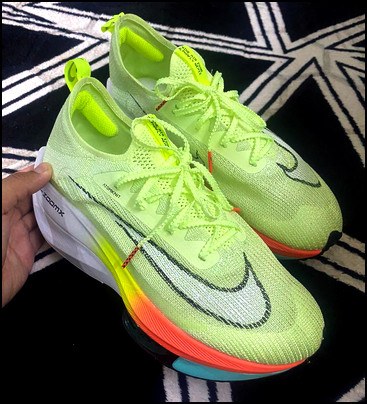
2. Midsole Cushioning
The Hoka Carbon X3 features a PROFLY X+ midsole foam, known for its lighter and bouncier characteristics than its predecessor.
The midsole provides a stable and smooth ride supported by a full-length carbon plate.
The cushioning is firm and responsive thanks to the foam and carbon plate.
Also, the Carbon X3 excels in comfort and efficiency for long distances and daily training but may lack the speed and excitement desired for racing.
My personal experience with the Carbon X3 reveals its effectiveness in mitigating leg fatigue during marathon efforts, allowing me to focus on maintaining pace and form.
Conversely, the Nike Air Zoom Alphafly 2 boasts a soft, springy ZoomX midsole foam with a Flyplate or carbon plate for enhanced propulsion and energy return.
The midsole cushioning, characterized by its delicate and bouncy feel, incorporates Air Zoom pods under the forefoot, providing extra responsiveness and cushioning.
For me, Alphafly 2 shines on race day, delivering a snappy, propulsive ride that encourages me to push boundaries and chase personal bests.
The Nike Alphafly’s midsole is greatly enhanced by the combination of ZoomX foam, carbon plate, and air pods in the forefoot.
3. Outsole – Traction and Durability
The Hoka Carbon X3 contains a rubberized EVA outsole that spans most of the shoe.
Also, it features a swallowtail shape for improved stability.
I found it durable and reliable, maintaining traction even on wet surfaces. However, some runners might perceive it as stiff due to limited flexibility.
Conversely, the Nike Air Zoom Alphafly 2 adopts a thin rubber outsole covering the forefoot and heel, exposing the midfoot.
Its waffle-patterned design with pentagonal lugs provides excellent road traction.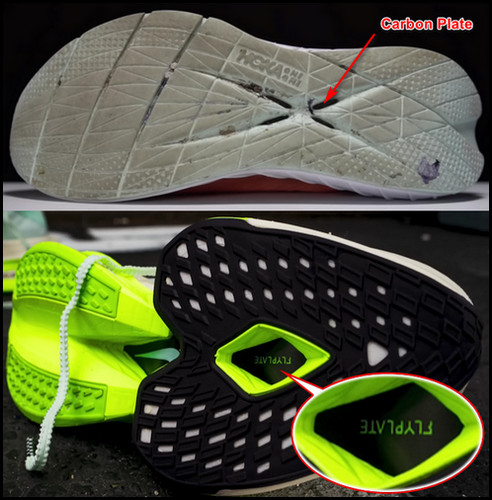
The outsole, following the curvature of the carbon plate, enhances propulsion. While responsive and fast, I find Alphafly’s outsole prone to wear.
Hoka Carbon X3 triumphs in the outsole division with adequate traction and better durability than the Nike Alphafly Next% 2.
4. Comfort and Support
The Hoka Carbon X3 and Nike Air Zoom Alphafly 2 offer distinct comfort and support experiences, and having worn both, here’s my take.
The Carbon X3 boasts a snug fit with its light and breathable upper, thin tongue, flat eyelets, and swallowtail heel.
It’s been my reliable companion for daily runs, thanks to its firm yet responsive midsole featuring PROFLY X+ foam and a supportive carbon plate.
Despite its lightweight and flexibility, it may lack the thrill factor for racing.
Conversely, the Air Zoom Alphafly 2 provides a custom fit with its soft Atomknit upper, integrated tongue, and Flywire cables.
In my experience, it’s the go-to choice for exhilarating race scenarios, thanks to the bouncy ZoomX foam, carbon plate, and Air Zoom pods.
However, its focus on speed might compromise versatility and everyday durability.
Both have found a place in my runs – the Carbon X3 for dependable daily training or long runs, whereas the Alphafly Next% 2 is for the excitement of race days.
5. Size & Fit
The Hoka Carbon X3 and Nike Air Zoom Alphafly 2 offer distinct experiences regarding size and fit.
Also, both of the shoes run true to size.
The Carbon X3 is a neutral shoe that can accommodate a variety of foot shapes. I found the spacious and rounded toe box to be comfortable and free of discomfort.
The Carbon X3’s upper, with its thin tongue, flat eyelets, and swallowtail heel, balances flexibility, breathability, and snug security.
I found it supportive during my runs without causing hot spots or blisters, although some runners might desire a more precise lockdown, particularly around the midfoot and heel.
Meanwhile, the Nike Air Zoom Alphafly 2 prioritizes precision in its lockdown.
With a narrower length and width, it may not be the best fit for those with wider feet. The soft, stretchy Flyknit upper, integrated tongue and Flywire cables deliver a snug fit.
Yet, my encounter highlighted a tight toe box, prompting a half-size increase to avoid discomfort, showcasing the importance of finding the right size to enjoy the Alphafly’s fast and enjoyable performance without compromising comfort.
I find the Hoka Carbon X3 is a better fit for me. Also, I don’t have to worry about the size as it is not overly tight on my feet.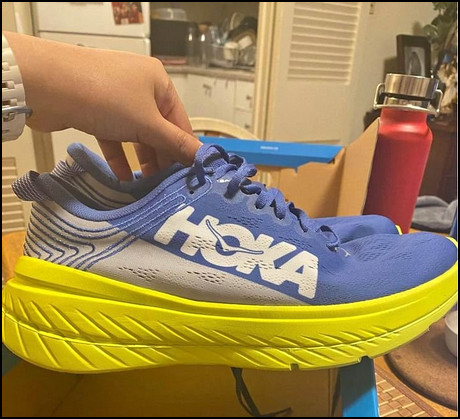
6. Performance Experience
The Hoka Carbon X 3 and Nike Air Zoom Alphafly Next 2 offer distinct speed, efficiency, and enjoyment qualities.
The Hoka Carbon X 3 was a versatile and responsive companion, adept at handling various distances and paces.
Its firm yet smooth cushioning supported the rockered profile, ensuring a stable ride.
The shoe’s lightweight and flexible design allowed for a natural running form, enhancing biomechanics during my runs.
While it excelled in efficiency and comfort for long runs and daily training, it didn’t evoke the exhilarating speed and propulsion in some other super shoes, lacking that explosive bounce for racing excitement.
Conversely, the Nike Air Zoom Alphafly 2 emerged as a fast and exhilarating contender designed for peak performance on race day.
The cushioning was soft and bouncy, augmented by Air Zoom pods, providing enhanced propulsion and energy return.
Nike Air Zoom Alphafly’s lightweight, elevated structure encouraged a forward-leaning running form.
During my experiences, it delivered a thrilling pace for racing and speed work.
However, its short and fast distances specialization made it less versatile and durable for everyday running, emphasizing its full potential in specific high-performance scenarios.
In the end, the Hoka Carbon X3 is an excellent choice for a long run that is somewhat fast-paced. However, I prefer to use my Nike Air Zoom Alphafly Next% 2 for speed runs.
7. Price and Value
The Hoka Carbon X 3 is more budget-friendly and durable than the Nike Air Zoom Alphafly 2. Priced at $200, it sits $75 lower than the Alphafly Next% 2, offering a robust outsole and upper that promises prolonged usage.
The Carbon X 3 is a solid value-for-money choice, capable of handling diverse distances and paces, making it an excellent investment for daily training and long races.
Personally, the Carbon X3’s price tag resonated with me.
As a runner who values comfort and performance, I appreciate its ability to handle training runs, tempo sessions, and even race day without breaking the bank.
Contrastingly, the Nike Air Zoom Alphafly 2 demands a premium, boasting a hefty $275 price tag—one of the highest in the market.
While its ZoomX foam is lighter than air, its durability doesn’t match the long-haul resilience of the Carbon X3.
The Alphafly Next 2, with its cutting-edge technology, becomes a targeted investment best suited for short, fast efforts where every ounce and propulsion counts.
You might find both shoes on sale at different times, but the price gap is significant even then.
I wouldn’t lie, though; there’s a certain charm to Alphafly’s price tag. It whispers of PBs shattered and podium finishes – the ultimate reward for speed demons willing to invest in their edge.
However, for me, the Carbon X3’s balance of affordability, versatility, and long-lasting performance ultimately wins the value race.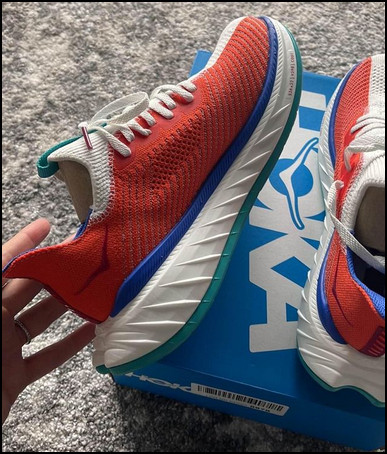
Benefits and Drawbacks of Hoka Carbon X3 and Nike Air Zoom Alphafly NEXT% 2
Both the Hoda Carbon X3 and Nike Air Alphafly Next% 2 are purchasing the boundaries of running shoe technology.
Here are the pros and cons of Hoka Carbon X3 and Nike Air Zoom Alphafly 2:
Hoka Carbon X3
- »Plush comfort for long miles.
- »Stable rockered geometry.
- »Versatile for marathons, tempos, and more.
- »Durable build.
- »Value for money, budget-friendly.
- »Heavier than Alphafly Next% 2.
- »Not as explosive.
Nike Air Zoom Alphafly Next% 2
- »Soft, bouncy, and explosive cushioning.
- »Precise and custom fit with Flyknit and Flywire.
- »Fast and fun shoe for racing and speed work.
- »Excellent traction on the road.
- »Lighter than the Hoka Carbon X3.
- »Not as durable as the Hoka Carbon X3.
- »Narrow platform (not ideal for stability or wide feet).
Hoka Carbon X3 vs. Nike Air Zoom Alphafly 2: Which is the Best?
Declaring a single champion in the Hoka Carbon X3 vs. Nike Air Zoom Alphafly 2 battle is like choosing between comfort and speed.
Both excel in their domains, catering to distinct runner profiles.
The Carbon X3 reigns supreme in plush comfort and all-weather versatility. Its stable platform and forgiving ride make it ideal for marathons and tempo runs, even for neutral-form runners.
Also, don’t forget the price.
The Hoka Carbon X 3 is also more affordable than the Nike Air Zoom Alphafly 2, costing $200 vs $275 (Alphafy).
It is not just a bargain; it is a steal.
I know price can be a deciding factor for many people because I am getting a lot of shoes. Perhaps sacrificing some of the Nike Air Zoom Alphafly’s superior technology.
However, its focus on comfort sacrifices some raw speed compared to the Alphafly Next 2.
Meanwhile, the Alphafly 2 charges ahead with its explosive propulsion and lightweight design. Its ZoomX foam and aggressive rocker geometry unleash your inner cheetah, perfect for short, fast efforts like PB attempts.
The Alphafly 2 is the pinnacle of running shoes, and despite the high price tag, you get a lot of technology for your money.
However, its narrow platform and minimal cushioning demand good form and might feel unforgiving for longer distances.
FAQs
Why are Hokas suddenly so popular?
Hoka’s popularity booms thanks to their plush comfort, rockered geometry for smooth strides, and focus on maximalist shoes. These appeal to runners who seek stability and cushioning. Also, their competitive price is another significant factor in their popularity.
Are Nike Alphafly Next% banned?
Nike Alphafly is not banned from official competitions. They meet regulations for shoe thickness (stack height) and carbon plate design.
Can you wear Alphafly Next% 2in a marathon?
Of course, you can wear Nike Alphafly 2 in Marathon. However, the Alphafly 2 lineup is better suited for covering short space with speed. This is because the shoe is designed to provide a high level of energy return, which can help runners maintain their speed over shorter distances.
Who are Hoka’s biggest competitors?
Hoka’s main competitors include Saucony, Brooks, and ASICS, all rivaling for market share in running shoes with diverse offerings for different performance needs.

